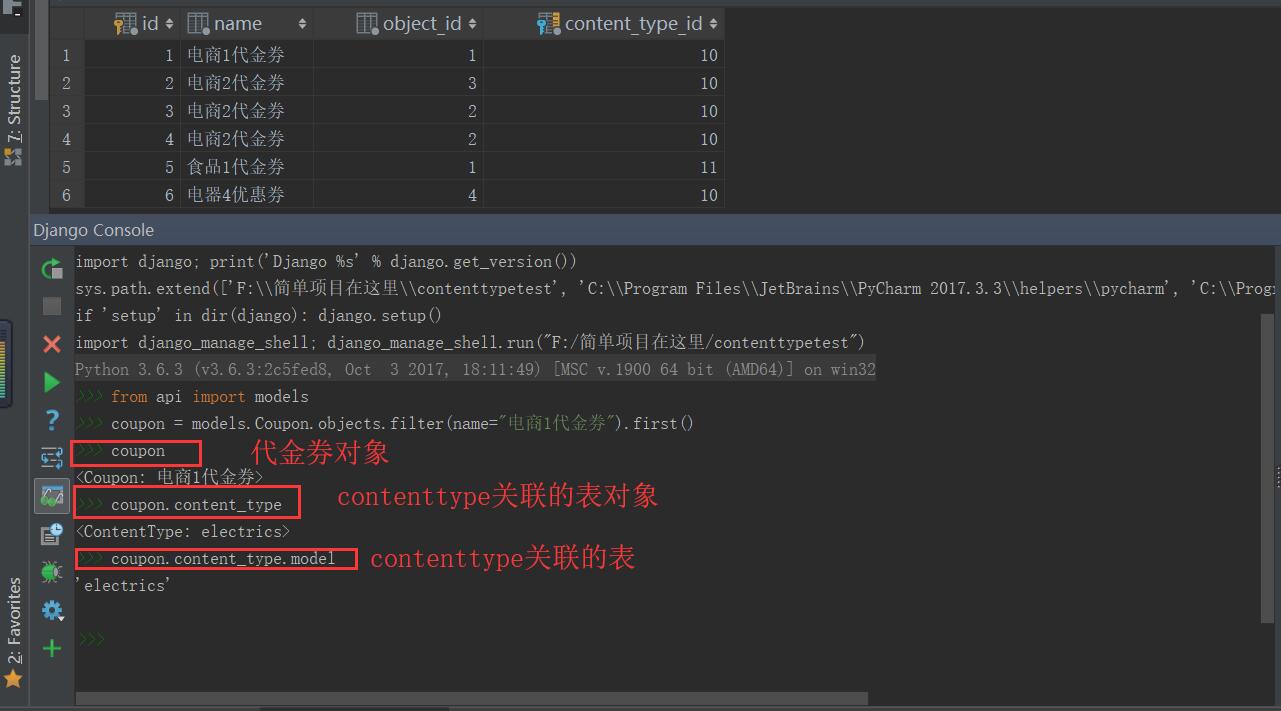contenttypes 是Django内置的一个应用,可以追踪项目中所有app和model的对应关系,并记录在ContentType表中。
models.py文件的表结构写好后,通过makemigrations和migrate两条命令迁移数据后,在数据库中会自动生成一个django_content_type表:
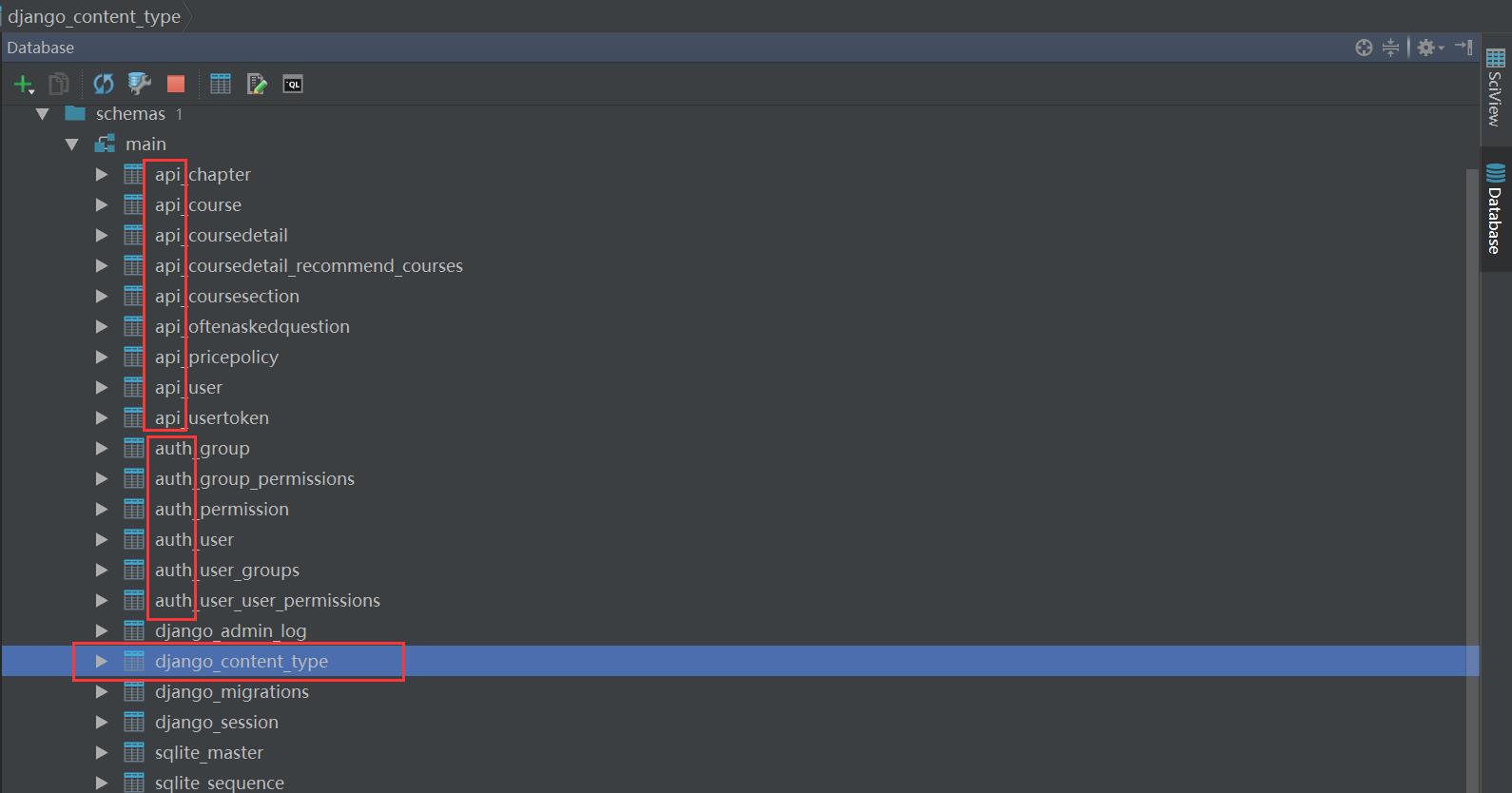
每当我们创建了新的model并执行数据库迁移后,ContentType表中就会自动新增一条记录。比如我在应用api的models.py中创建表class Electrics(models.Model): pass。从数据库查看ContentType表,显示如下:
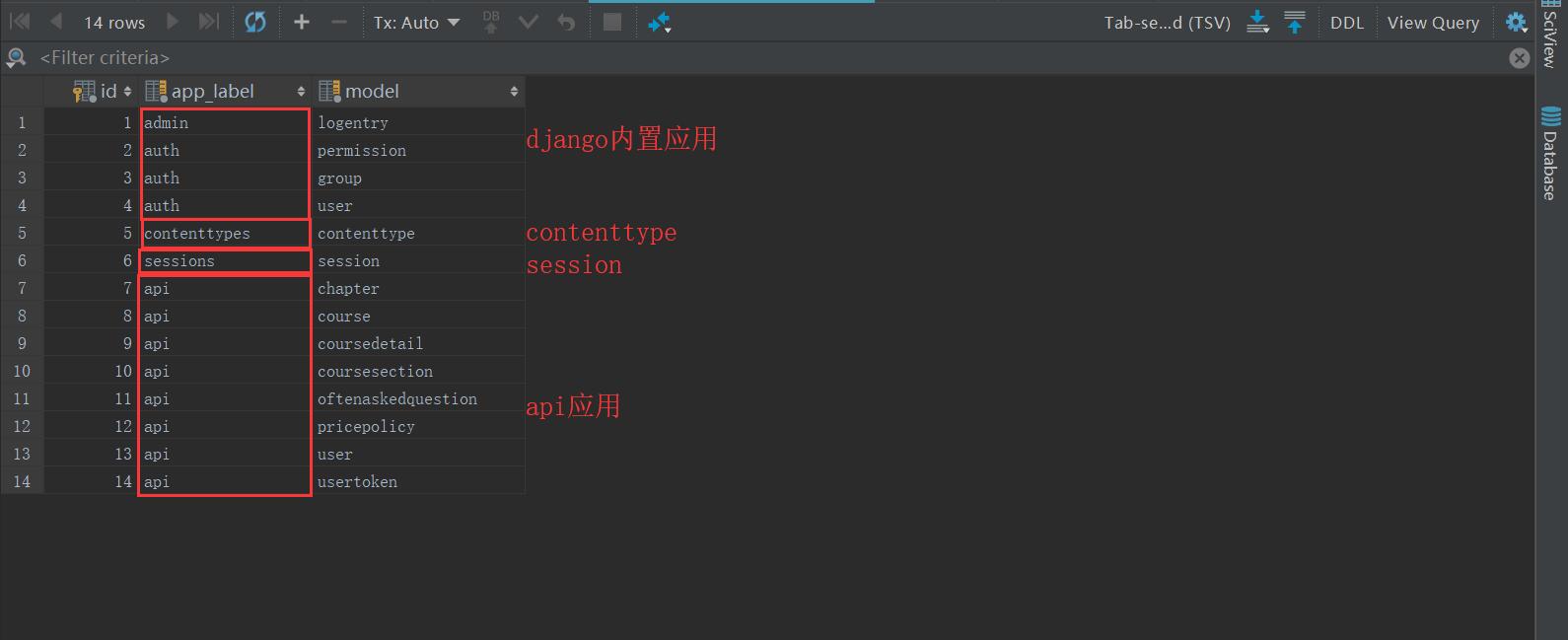
那么这个表有什么作用呢?这里提供一个场景,网上商城购物时,会有各种各样的优惠券,比如通用优惠券,满减券,或者是仅限特定品类的优惠券。在数据库中,可以通过外键将优惠券和不同品类的商品表关联起来:
from django.db import modelsclass Electrics(models.Model): """ id name 1 日立冰箱 2 三星电视 3 小天鹅洗衣机 """ name = models.CharField(max_length=32)class Foods(models.Model): """ id name 1 面包 2 烤鸭 """ name = models.CharField(max_length=32)class Clothes(models.Model): name = models.CharField(max_length=32)class Coupon(models.Model): # 特殊关系表""" id name electric_id food_id cloth_id more... # 每增加一张表,关系表的结构就要多加一个字段。 1 通用优惠券 null null null 2 冰箱满减券 2 null null 3 面包狂欢节 null 1 null """ name = models.CharField(max_length=32) electric = models.ForeignKey(to='Electrics', null=True) food = models.ForeignKey(to='Foods', null=True) cloth = models.ForeignKey(to='Clothes', null=True)
如果是通用优惠券,那么所有的ForeignKey为null,如果仅限某些商品,那么对应商品ForeignKey记录该商品的id,不相关的记录为null。但是这样做是有问题的:实际中商品品类繁多,而且很可能还会持续增加,那么优惠券表中的外键将越来越多,但是每条记录仅使用其中的一个或某几个外键字段。
contenttypes 应用
通过使用contenttypes 应用中提供的特殊字段GenericForeignKey,我们可以很好的解决这个问题。只需要以下三步:
在model中定义ForeignKey字段,并关联到ContentType表。通常这个字段命名为“content_type”
在model中定义PositiveIntegerField字段,用来存储关联表中的主键。通常这个字段命名为“object_id”
在model中定义GenericForeignKey字段,传入上述两个字段的名字。
为了更方便查询商品的优惠券,我们还可以在商品类中通过GenericRelation字段定义反向关系。
示例代码:
from django.db import modelsfrom django.contrib.contenttypes.models import ContentTypefrom django.contrib.contenttypes.fields import GenericForeignKey, GenericRelationclass Electrics(models.Model): name = models.CharField(max_length=32) price = models.IntegerField(default=100) coupons = GenericRelation(to='Coupon') # 用于反向查询,不会生成表字段 def __str__(self): return self.nameclass Foods(models.Model): name = models.CharField(max_length=32) price=models.IntegerField(default=100) coupons = GenericRelation(to='Coupon') def __str__(self): return self.nameclass Clothes(models.Model): name = models.CharField(max_length=32) price = models.IntegerField(default=100) coupons = GenericRelation(to='Coupon') def __str__(self): return self.nameclass bed(models.Model): name = models.CharField(max_length=32) price = models.IntegerField(default=100) coupons = GenericRelation(to='Coupon')class Coupon(models.Model): """ Coupon id name content_type_id object_id_id 美的满减优惠券 9(电器表electrics) 3 猪蹄买一送一优惠券 10 2 南极被子买200减50优惠券 11 1 """ name = models.CharField(max_length=32) content_type = models.ForeignKey(to=ContentType) # step 1 object_id = models.PositiveIntegerField() # step 2 content_object = GenericForeignKey('content_type', 'object_id') # step 3 def __str__(self): return self.name 注意:ContentType只运用于1对多的关系!!!并且多的那张表中有多个ForeignKey字段。
数据化迁移,再给每张表添加数据
衣服表,电器表,床上用品表,美食表
添加完之后,数据迁移
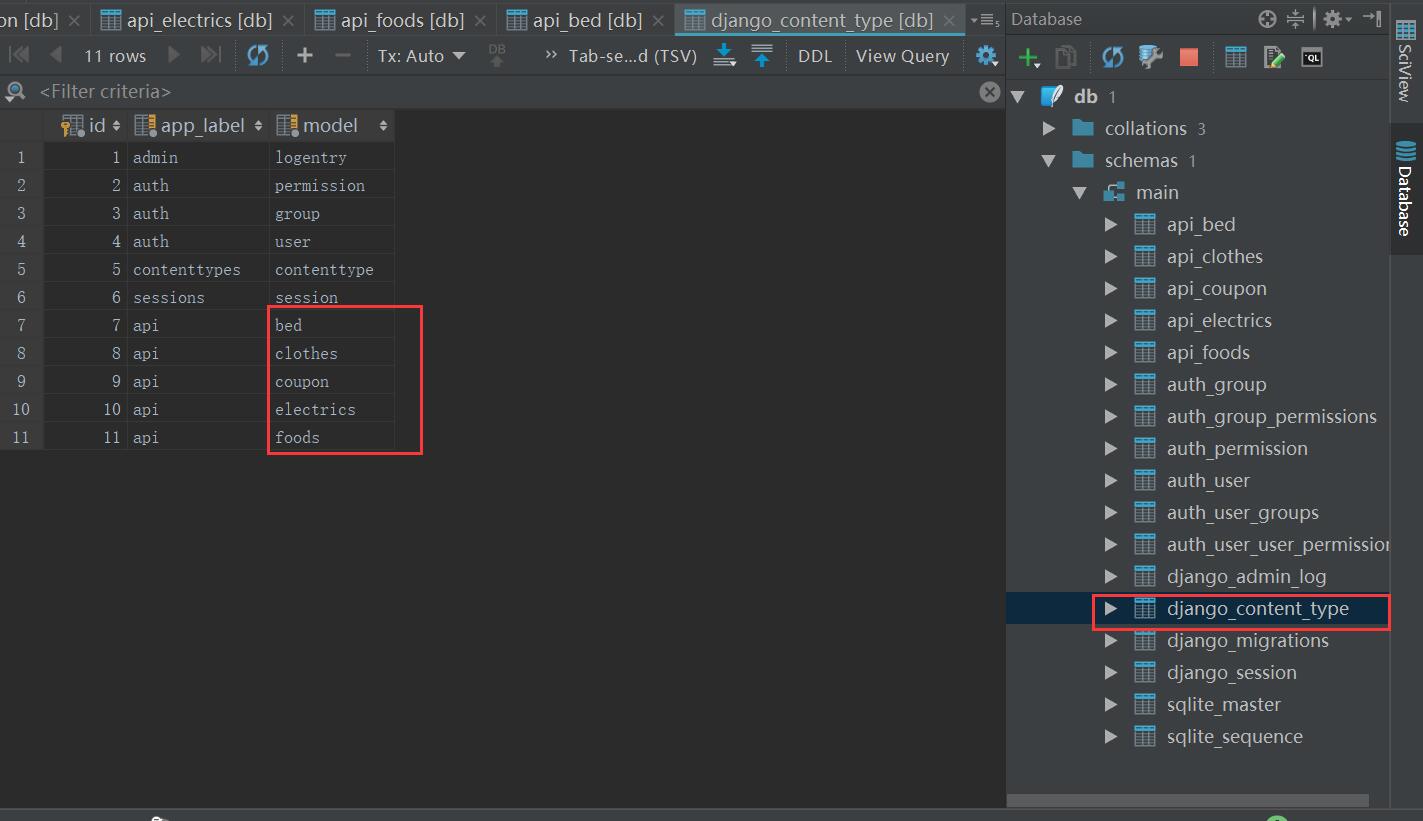
创建记录和查询
from django.shortcuts import render, HttpResponsefrom api import modelsfrom django.contrib.contenttypes.models import ContentTypedef test(request): if request.method == 'GET': # ContentType表对象有model_class() 方法,取到对应model content = ContentType.objects.filter(app_label='api', model='electrics').first() # 表名小写 cloth_class = content.model_class() # cloth_class 就相当于models.Electrics res = cloth_class.objects.all() print(res) # 为三星电视(id=2)创建一条优惠记录 s_tv = models.Electrics.objects.filter(id=2).first() models.Coupon.objects.create(name='电视优惠券', content_object=s_tv) # 查询优惠券(id=1)绑定了哪个商品 coupon_obj = models.Coupon.objects.filter(id=1).first() prod = coupon_obj.content_object print(prod) # 查询三星电视(id=2)的所有优惠券 res = s_tv.coupons.all() print(res) # 查询obj的所有优惠券:如果没有定义反向查询字段,通过如下方式: content = ContentType.objects.filter(app_label='api', model='model_name').first() res = models.OftenAskedQuestion.objects.filter(content_type=content, object_id=obj.pk).all() return HttpResponse('....') 总结: 当一张表和多个表FK关联,并且多个FK中只能选择其中一个或其中n个时,可以利用contenttypes app,只需定义三个字段就搞定!
创建记录
关系表的结构
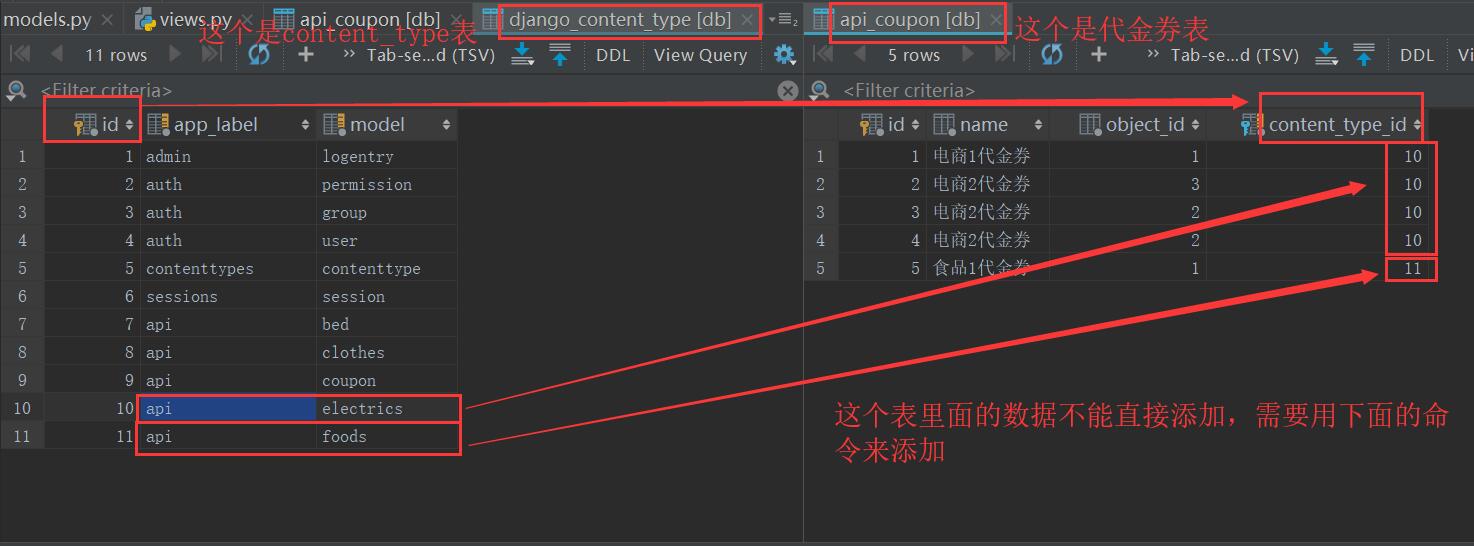
用语法给关系表加记录。
添加方式1:
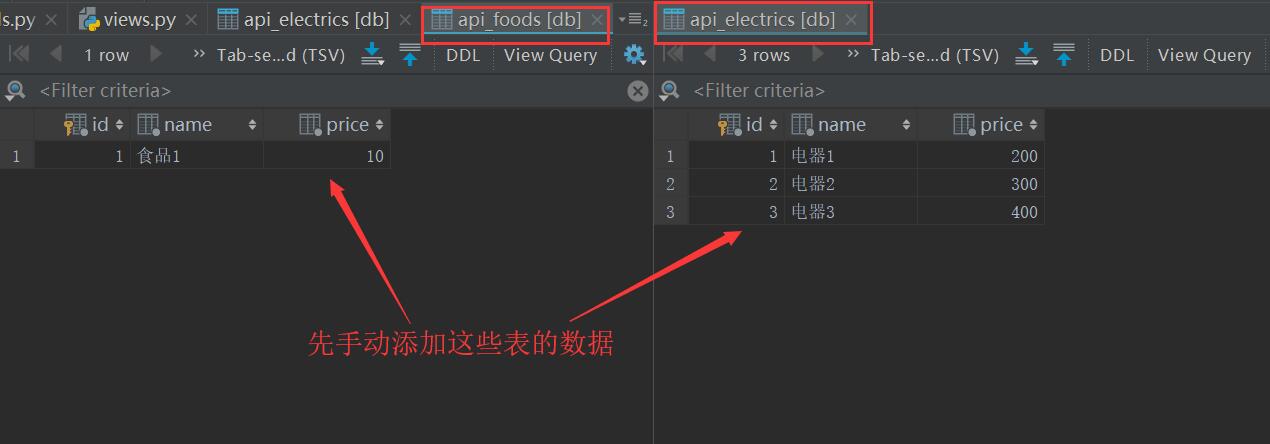
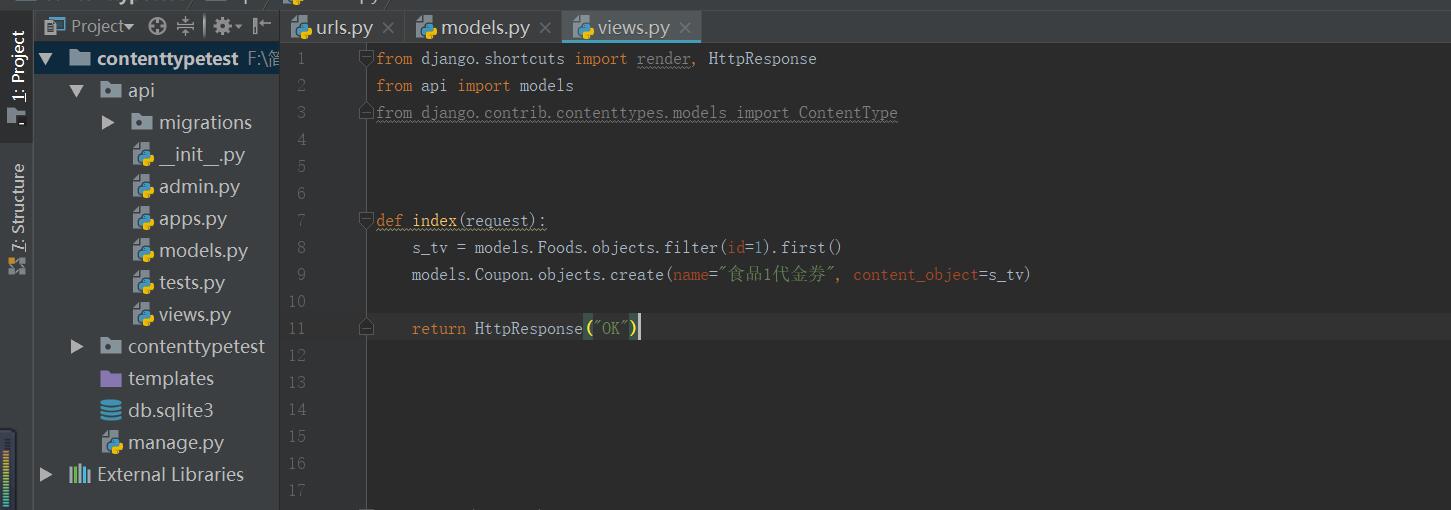
接下来用postmen来发送请求
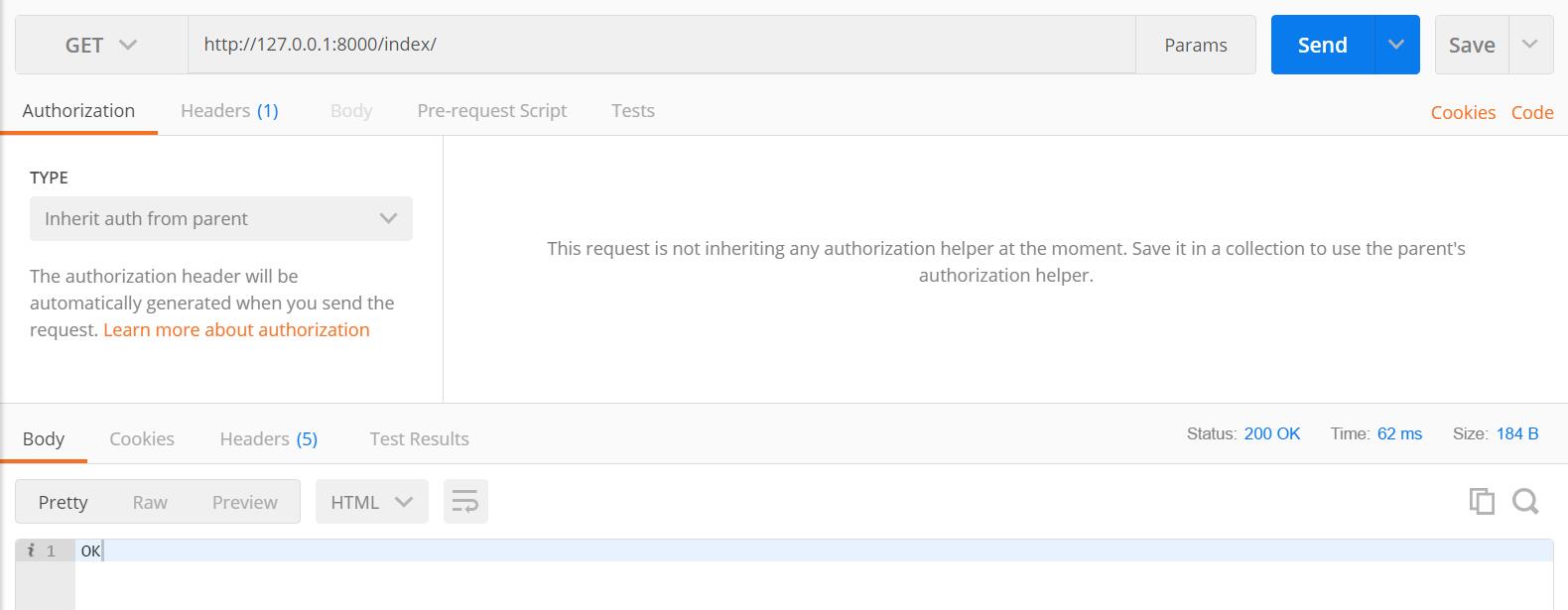
然后代金券表数据就添加完成了
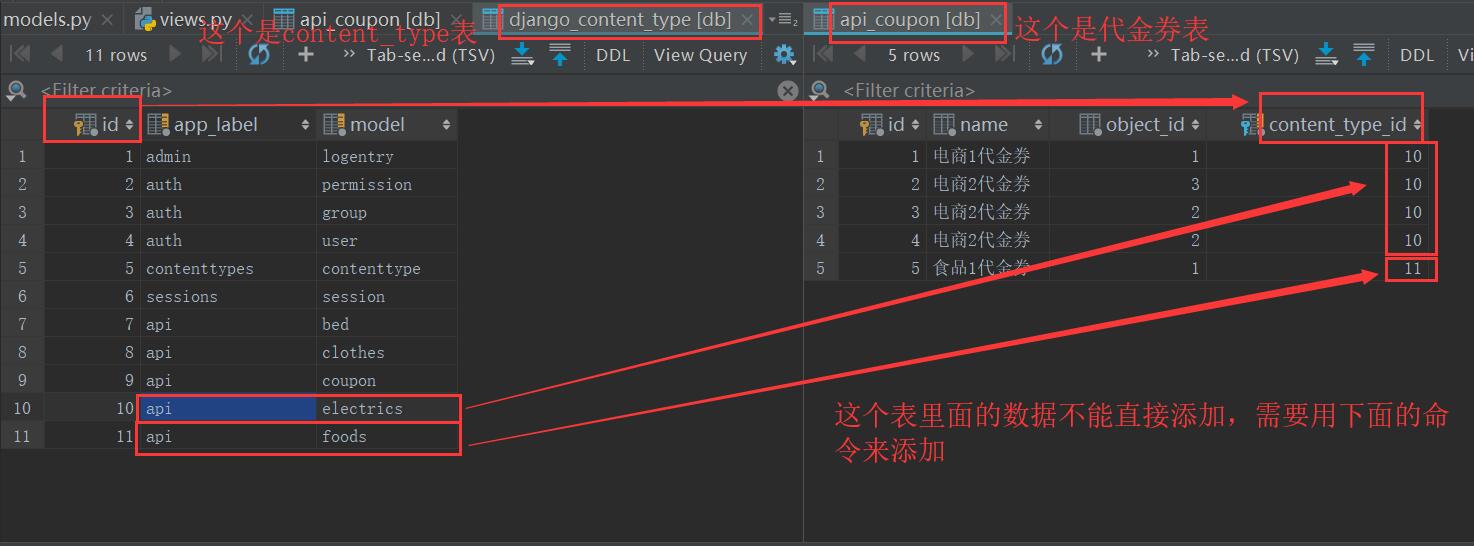
添加方式2:
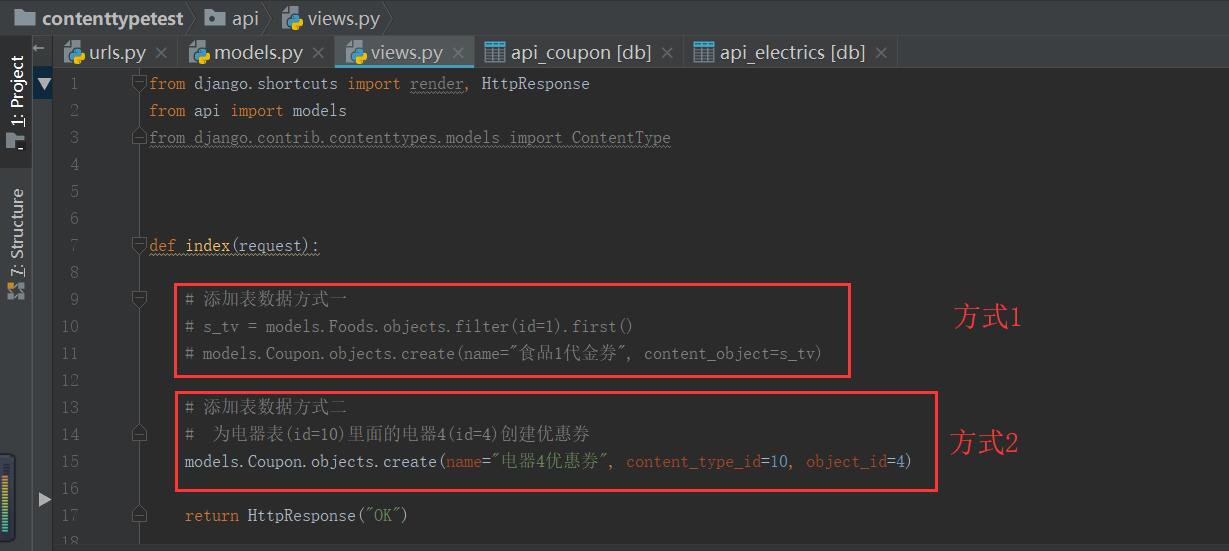
通过postmen发送请求结果

查询记录
查询name="电商1代金券"的代金券信息

